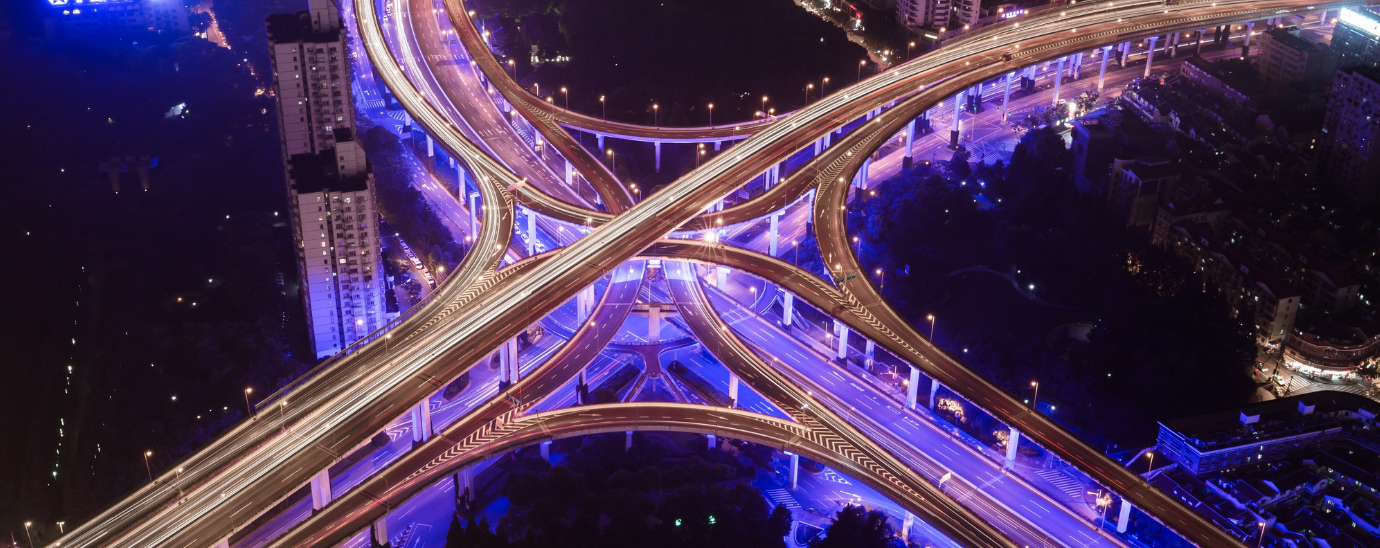The future of smart cities

We look at the various ways that technology is creating smart cities
A smart city uses technology to improve the quality of its services and the lives of those who live in the area. The various projects and initiatives that can be implemented into a city include power distribution, transport systems, streets lights, and how emergency departments react to emergencies.
In 2018, the United Nations Population Division reported that about 55% of the global population lived in cities. They have projected that by 2050 the number will rise to 68%. As city populations continue to grow, governments will need to support increased demand. With more people moving toward the big cities, there will be an increase in environmental, societal, and economic challenges. However, the introduction of smart cities can address some of these challenges making the city a better place for people to work and live.
Forbes has described the creations of smart cities as the “perfect storm” of technology trends – trends that allow us to create spaces in which humans and technology interact in a more connected, intelligent, and automated way. Think of trends such as artificial intelligence, big data, the Internet of Things (IoT), and autonomous vehicles. Combined, advances like these are changing the world and how we live in it. Our cities are no exception.
Bernard Marr, Futurist, provided Forbes with a few examples of how cities are getting smarter.
The first example Marr gave is probably one of the best. Traffic is the bane of many a city-dweller’s life, but technology offers some promising solutions. For example, public transport routes can be adjusted in real-time according to demand, and intelligent traffic light systems can be used to improve congestion.
Another example is how cities are using technology to use city resources more efficiently. For example, mobile and broadband company Telefonica has invested heavily in smart city technology in its home country, Spain. In one example, sensors are attached to refuse containers to report, in real-time, how full they are – which means refuse collectors don’t have to waste time traveling to bins that are only half-full. It also means KPIs can be more closely tied to bottom-line impact, such as how many bins are close to overflowing and won’t be emptied within the next few hours. Again, this is far more meaningful than measuring abstract factors, like how many waste collection trucks are out on the road.
Improving energy efficiency is becoming increasingly important and is another example of how smart cities can improve lives. As well as investing in clean energy sources, smart cities also use technology to help closely monitor real-time energy use and reduce energy consumption. For example, in Amsterdam, homes are being provided with smart energy meters designed to incentivize reduced energy consumption. In addition, the city of Schenectady, New York, is upgrading its streetlights to LED technology, which allows the lights to be adjusted or dimmed based on real-time data.
Making cities safer is another important example of how cities are getting smarter. Thanks to the vast spread of Wi-Fi connectivity, IoT technologies, and CCTV cameras, cities can harness technology to improve resident safety and boost incident response times. In New Orleans, for example, real-time video data from Bourbon Street is analyzed to better track and allocate resources on the ground and improve public safety.
The last example that Marr provides is how smart cities are encouraging greater collaboration with citizens. One of the really exciting things about smart city technology is that it encourages residents to get more involved. Common examples include apps that allow citizens to report local issues more easily or community networking platforms that will enable neighbors to connect and share resources. In another example, a low-cost environmental testing kit encourages residents to collect local environmental data. The Smart Citizen Kit can be placed in balconies and windowsills to gather data on the local environment, including air pollution and noise. Then, the data is streamed to an online platform, effectively creating a crowdsourced map of data from all over the world.
When it comes to building smart cities. The creators need to plan by blending the past and present by incorporating new technologies into existing infrastructure. Plans for successful smart cities must include the following three principles put together by Jeremy Goldberg, WWPS Director of Critical Infrastructure:
- Smart city planners need to build for people as the impact of the work on real people must be at the forefront of any decision-making.
- Smart city planners must enable creativity. All solutions should be a springboard to public and private sector creativity and productivity.
- Smart cities must solve real problems. Smart city planners must let real issues guide priorities, not a desire to implement a particular technology.
With smart city developments being in the early stages of their implementation, a major drawback needs to be addressed. One of the biggest risks is the threat of various cyberattacks that could create havoc within a city. Smart cities gather vast amounts of important and confidential data, and a cyberattack can lead to massive losses of valuable data. Cybercriminals may have political or social agendas and will use the information and platforms to instil fear. Another attack that may occur is where state-backed cybercriminals perform digital espionage on another’s national infrastructure.
READ MORE:
- Powering smart cities with the cloud
- Smart Cities: the future of flooding control
- Meet the technology building the smart cities of the future
- Smart City Strategies and the Forgotten Visitor Economy
While this is a downfall, there are various safeguarding actions that smart city planners can make to secure their smart cities. First, they can conduct penetration tests that can simulate multiple attacks to identify vulnerabilities and security measures can be put in place to deter these attacks. City planners should also implement data encryption to scramble any data to prevent any illegal access. Lastly, security monitoring should be built-in to all systems to assess, capture and evaluate data as it detects threats.
For more news from Top Business Tech, don’t forget to subscribe to our daily bulletin!
